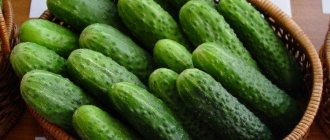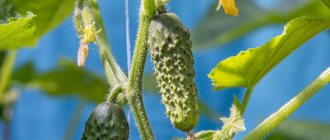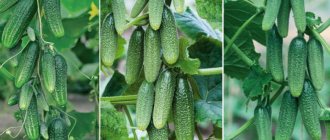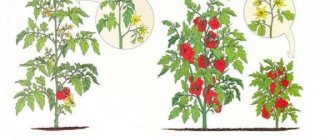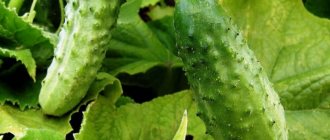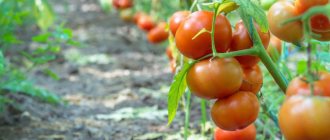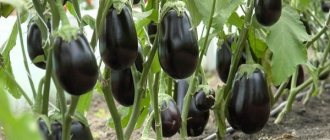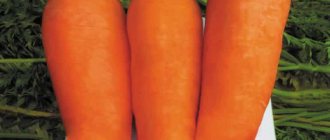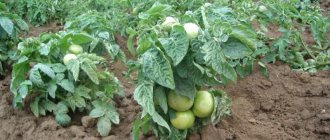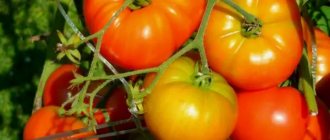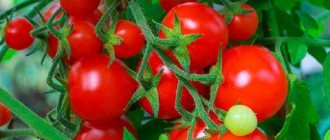How to grow cucumbers in Kuban in the heat? Many gardeners have been complaining in recent years: there are no cucumbers, the leaves have turned yellow too early, there are no ovaries. We have a hot climate in Kuban. In summer it is hot and even drought. There is no rain or very little rain. Cucumbers are moisture-loving plants. They care about more than just moisture in the soil. They also have a hard time withstanding dry, hot air.
LiveInternetLiveInternet
—Categories
- exchange (29)
- Exchange. Parcels received. (20)
- Tildochki (12)
- Sweets (8)
- Wallow. Felt. (4)
- Selling (2)
- Gardening and horticulture (1)
- Charity (1)
- Useful information about knitting (0)
- Wallow. Felt. (0)
- embroidery (0)
- cross stitch (2)
- crochet (49)
- crochet (8)
- knitting (6)
- children's things (13)
- toys (33)
- toys (3)
- toys (0)
- toys (3)
- Irish lace (1)
- competitions (4)
- cooking (6)
- swimwear (2)
- my works (16)
- dresses, sundresses (2)
- sewing (2)
- sewing (0)
—Search by diary
—Subscription by e-mail
-Statistics
Heat-resistant and drought-resistant varieties of cucumbers
Heat-resistant and drought-resistant varieties of cucumbers
Heat resistance - the ability to tolerate high temperatures - is determined by the physiological and morphological characteristics of plants.
There are two types of heat resistance in vegetable crops.
- Heat resistance of watermelon is associated with a powerful root system, high suction force of roots and transpiration of leaves, as well as with strong pubescence of leaves and the presence of aerenchyma (shiny “airy” spots) on the surface of the leaves, reflecting solar radiation and thus protecting plants from overheating.
- Heat resistance of pumpkin is due to the high resistance of cells to heat (up to 60-65ºС). At the same time, the power of development of the root system, root pressure and transpiration in pumpkin are weaker than in watermelon.
Cucumber is inferior in heat resistance to melons - watermelon and pumpkin. Cultivated varieties and hybrids (we are not talking about wild species of cucumber) do not have morphological protective devices against high temperature: strong pubescence of leaves, aerenchyma, pronounced cuticle (waxy coating on the leaves). There is no such powerful root system as that of a watermelon. The temperature threshold for coagulation is 45-50ºС.
The heat resistance of cucumber is maintained mainly due to relatively high transpiration.
Therefore, in hot summer conditions, you need to try to keep the soil moist and not allow it to dry out. However, if the soil is very warm (up to 40ºC and above), this can lead to damage to the roots, and then, even in conditions of optimal soil moisture, cucumber plants will suffer from the heat, and leaves may begin to wilt.
This can be avoided by mulching the soil with white material (sawdust, white lutrasil, black and white film), which reflects the sun's rays and thus reduces the soil temperature.
Cucumbers have varietal differences in heat resistance. Hybrids created on the basis of varieties from Central Asia, India, and Northern China have increased heat resistance.
The ones that tolerated the abnormally hot summer of 2010 better than others were such hybrids as F1 Burevestnik, F1 Farmer, F1 Lord, F1 Maryina Roshcha, F1 Ant, F1 Balcony, etc., as well as hybrids of the Zozulya variety: F1 Makar, F1 Marta, F1 Melnitsa .
In hot southern regions, preference is given to cucumbers with good (strong) branching. Such hybrids tolerate overheating better and bear fruit for a long time, while weakly branching forms quickly “burn out” - that is, they quickly finish fruiting. In conditions of prolonged heat, it is necessary that new leaves constantly appear on the cucumber vines and new ovaries grow.
At the same time, it is not at all necessary that the side shoots be long: for example, in hybrids of the Ant variety ( F1 Ant, F1 Grasshopper, F1 Trump Card, F1 First Class, F1 Okhotny Ryad ), the constant growth of shortened side shoots with short internodes ensures a long fruiting period .
The unusually hot weather this summer has led not only to overheating, but also to significant dehydration (drought).
Drought is a long period without rain, accompanied by a continuous decrease in relative humidity and, in most cases, high temperature. There are atmospheric and soil droughts. Atmospheric drought, characterized by low air humidity, occurs due to the onset of a hot wind (hot dry wind), haze (the appearance of suspended solid particles in the air) or an extensive anticyclone. Soil drought is caused by lack of rain (irrigation). It intensifies in combination with high air temperatures, but can also occur in moderate temperature conditions. Drought resistance is the ability of plants to tolerate dry periods and dehydration of plant cells and tissues. Lack of water causes water deficiency in plants, leading to wilting.
TOP 40 best varieties of cucumber hybrids for 2021
Popular cucumber hybrids
Let's start the rating with the most popular and popular hybrids, which are already loved by gardeners in Russia. If you are choosing which cucumbers to plant in the 2021 season, feel free to choose these varieties; they, as they say, have already stood the test of time and the garden.
- Baby F1
Early maturing bee-pollinated hybrid. Received recognition for its unpretentiousness and rapid appearance of the harvest in 40 days. Cucumbers are not prone to developing bitterness, and the crop itself can grow in limited greenhouse areas.
- Herman F1
This is a popular early ripening hybrid (ripening in 40-45 days) for growing in open ground. Bunch variety - 6-7 ovaries are formed. Shows good yield - the average length of the fruit is 10-12 cm, up to 9 kg per meter. It has excellent taste and is used in salads and pickles.
- Emelya F1
One of the favorites in our rating. It is an early ripening variety: the first cucumbers of the hybrid ripen in 40-45 days. It has a distinct taste and is perfect for summer salads. Grows well in greenhouses, including polycarbonate ones.
- F1 athlete
Hybrid cucumbers that ripen in less than 2 months. In a greenhouse, greens grow large, up to 20 cm in length and 4-4.5 cm in diameter. They are loved most of all for their taste: the fleshy fruits are ideal for salads. So if you are for a healthy lifestyle, “Athlete” is a great choice!
Atlet cucumbers are an excellent hybrid for fresh salads
- Hercules F1
One might say, a “universal” hybrid. And one of the favorite varieties of gardeners. They love it for its ease of care - it can grow both in open ground and produces crops in heated winter greenhouses. Self-pollinating. Resistant and not susceptible to viral and fungal infections. Plus, another advantage of Hercules is its good taste: large fruits up to 15-16 cm are ideal for summer salads.
By the way, it is one of the record holders in the rating: the yield reaches 25-28 kg per square meter.
- Mother-in-law F1
Another “folk” variety of Russian gardeners. This universal crop grows well in greenhouses, although it can also be planted in open ground. "Mother-in-law" is a parthenocarpic species, i.e. does not require pollination by insects. The variety shows excellent commercial yield - up to 12 kg per square meter of greenhouse, the fruits reach a length of 11-13 cm and a weight of 100-120 grams.
- Hector F1
Hector is a Dutch hybrid, which is recommended for growing in greenhouses in Russian conditions. The variety is early ripening and is used for both salads and pickles. The only “but” is that the cucumber shows low yield: with large fruits up to 13 cm and a weight of up to 100 grams, it yields only 3-4 kg per meter. Resistant to viruses and diseases.
- Amazon F1
Another hybrid in our salad rating. It is notable for its large fruits: cucumbers grow up to 300 grams, up to 30 cm in length with a diameter of 4-4.5 cm. The Amazon variety is also loved by those who grow cucumbers in winter greenhouses - this parthenocarpic species does not require pollination.
- Anyuta F1
An easy to care for cucumber hybrid. It is a parthenocarpic hybrid and does not require pollination. Shows very decent yield - 15-17 kg per square meter. The fruits are slightly smaller than those of the Amazon - they grow up to 12 cm in length and 3-3.5 cm in diameter.
- White Angel F1
Short-fruited hybrid of paternocarpic species. The fruits reach a length of 10-11 cm, and it is for this that the variety is valued. Along with its yield (15-16 kg per square meter). It begins to bear fruit at 43-44 days.
In terms of taste, it is considered universal - good both in summer salads and for canning for the winter.
- Murashka F1
This variety is valued for its miniature size (10-11 cm in length), tuberous skin and yield (11-12 kg per meter). The hybrid is suitable for growing in polycarbonate greenhouses.
- Quadrille F1
Early ripening, paternocarpic variety. It begins to bear fruit on the 40-44th day and produces a yield of 10-11 kg per square meter. This is a bunch hybrid, with up to 10 ovaries in a bunch. Cucumbers grow up to 11 cm and are ideal for pickling and canning. They are distinguished by dense pulp and the absence of emptiness in the center of the fruit.
High-yielding hybrids for greenhouses
The next in our ranking are varieties that produce consistently high yields. With proper care, you can count on 10-15 kg of cucumbers per square meter of greenhouse. If your goal is to win the battle for the season's harvest, choose these hybrids.
- Zozulya F1
This hybrid is a real record holder for yield: during the season you can collect up to 16 kg per meter. The length of cucumbers is 15-25 cm. The variety is universal - suitable for salads and for canning and any preparations.
Cucumber variety Zozulya - a high-yielding hybrid for the greenhouse
- Matrix F1
Another excellent hybrid for growing in polycarbonate greenhouses. It begins to bear fruit from 41 days and shows good yield - 11-12 kg per meter.
- Cartoon F1
An early ripening hybrid of cucumbers, it begins to bear fruit from the 39th day. Produces large fruits - up to 130 grams with a yield of 12-13 kg per meter. Grows well in polycarbonate greenhouses.
- Sparta F1
The main feature is that cucumbers can be harvested from July to October. With high yields, the hybrid produces fruits up to 10-12 cm. This is a salad variety that grows well in open ground and is resistant to pests.
- Madrilen F1
The high-yielding variety of cucumbers was bred in Holland for a stable climate without sudden temperature changes. Designed for growing in greenhouses.
During the season it is possible to harvest a harvest of 15 kg per meter in greenhouse conditions (from open ground - up to 12 kg).
Early ripening varieties of cucumber hybrids
Early ripening or early ripening cucumbers are worth choosing if you want to get harvests at the beginning of summer. These hybrids begin to bear fruit 30+ days after germination. If you want to please yourself with fresh salad at the very beginning of summer, choose early-ripening varieties!
- Cupid F1
The first fruits of the hybrid can be harvested on day 37. The variety has a good yield of 14 kg per meter, and the fruits reach 13-14 cm. It is resistant to many cucumber viruses and diseases.
- Courage F1
These hybrids are the favorites of many gardeners. Cucumbers begin to bear fruit already on the first 41 days after germination, and also show records for productivity: fruits with a length of up to 15 cm can produce up to 18 kg of yield per meter. The taste is also pleasing - honeycomb is suitable for salads and canning.
- June precocious F1
As the name implies, the variety is famous for its early ripening - from germination to the beginning of fruiting 40-44 days. If you want to be the first to harvest your cucumbers, June precocious is a great option.
The variety is suitable for greenhouses and for planting in open ground, and, importantly, even in regions of so-called “risky farming”, therefore it can be recommended for the Urals and Siberia. It produces fruits of average length 9-10 cm and weight 45-50 grams, belongs to the so-called “gherkin type”.
- Mirabell (or Mirabella) F1
Another “Dutchman” in our ranking, known to Russian gardeners. Designed for cultivation both in greenhouses and open ground. It begins to bear fruit after 40-45 days, the fruits reach a length of 15 cm. It shows an average yield of 7-8 kg per meter, but it grows until mid-September.
- Marinda F1
Early ripening hydride of Dutch origin, fruit appearance time is 40-45 days. Record holder for yield - up to 30 kg in greenhouse conditions. Can be grown anywhere, but is ideal for regions with a mild climate in central Russia.
- Meringue F1
Parthenocarpic species of early ripening, begins to bear fruit already on the 37-40th day. This is a Dutch variety, which relatively recently, in 2007, was approved for Russian gardeners and recommended for cultivation in all regions of Russia without restrictions. The yield is up to 15 kg per meter in greenhouse conditions.
- Mertus F1
Another ultra-early Dutch variety with ripening on the 40th day. Famous for its large greens, 15-25 cm in length. For cultivation in greenhouse conditions.
Mertus - an ultra-early Dutch hybrid with cucumbers up to 25 cm
- Lenara F1
An early-ripening hybrid with high yield, it can produce a harvest of up to 16-17 kg. It begins to bear fruit early on the 40th day and is known for its standard greens: all cucumbers are similar to each other, there is no tendency to “barrel formation”. It has a pleasant taste and is suitable for fresh use and canning.
Mid-season hybrid varieties
Mid-season varieties ripen longer, on average 40-50 days. You can count on this harvest at the end of June-July.
- Lord F1
The variety ripens in 40-44 days in open ground. It has increased frost resistance and immunity to many cucumber viruses and diseases. Gives a yield of 10-13 kg.
Bee-pollinated hybrid. It received “national recognition” for its cold resistance and resistance to phytodiseases, which is why it continues to bear fruit in August and early September, when other varieties have already died. Zelentsy reach a length of 10-12 cm and weigh 100-120 grams. Excellent for both salads and canning due to its excellent taste.
- Kantara F1
Dutch mid-early variety, intended for cultivation in greenhouses. It has received recognition, first of all, for its taste: it is used both in reduced and canned form.
Late-ripening varieties of cucumber hybrids
This group of hybrids ripens much later than the others, approximately 50-60 days.
- Phoenix-640 F1
Large cucumber varieties for open ground. Ripening occurs at 55-60 days. Produces large fruits 15-18 cm with a weight of 130-170 g. Tasty and crispy fruits are great for salads.
Bundle varieties of hybrids
This group of cucumber hybrids is of interest for two reasons. Firstly, it is possible to collect good harvests even from small greenhouse areas. Secondly, the added convenience is that there is no need for daily maintenance. This is especially convenient if you cannot visit your garden every day.
- Acorn F1
A mid-early hybrid, the main feature is a large number of ovaries (up to 12) on the nodes. Zelentsy are of medium length, up to 10-11 cm and weigh 110 g. The yield of the variety is 9-9.5 kg per meter of greenhouse.
- King of the Beds F1
A hybrid with a very pretentious name. Tufted, parternocarpic variety for greenhouses. Gives excellent birth - up to 11 kg per meter. The number of ovaries is up to 5-6 pieces. Suitable for both salad use and canning.
- Gavroche F1
There are up to 5 fruits in a bunch, and this gives a good yield - up to 11 kg. In terms of taste, cucumbers are universal, both for salads and pickles.
Hybrid cucumbers for open ground
Cucumber varieties for open ground were bred by breeders specifically for Russian conditions, which are mostly harsh and changeable. It is clear that the yield and speed of fruit ripening strongly depend on the region and specific climatic and weather conditions, and at the same time, these hybrids have taken root well in beds in many gardening areas in the country.
- Artist F1
Parthenocarpic variety for growing in open ground. The cucumber begins to bear fruit after 45 days. The length of the fruit reaches 9-10 cm and weight up to 90 grams.
Valued by gardeners for its disease resistance and excellent taste. It is used for salads, and for pickling and canning.
Artist – parthenocarpic hybrid for growing in open ground
- True friends F1
An early bee-pollinated variety, bred by Russian breeders. It takes only 37-39 days from germination to harvest. The variety is relatively cold-resistant and is intended for cultivation in open ground or spring greenhouses. Produces greens up to 10 cm long and 4 cm in diameter. Universal for use: suitable for salads and canning.
- Brownie F1
Another Russian hybrid for open ground. It is medium late, the harvest can be harvested 46-55 days after germination. It produces excellent fruits without bitterness, up to 15 cm long, which are great for salads and winter preparations.
Winter hybrid varieties
These cucumbers are grown in winter greenhouses and can produce harvests when the rest have already died. As a rule, they are characterized by large leaves and long fruits up to 30 cm.
- Masha F1
Another common variety of cucumbers in our rating. It is distinguished by its early ripening and resistance to diseases. It produces good yields - up to 11 kg with relatively small greens (up to 9 cm in length and 3-3.5 cm in diameter). The biggest advantage is the complete absence of bitterness and voids inside the fruit at the genetic level. The variety is universal - suitable for salads and canning.
- Arctic F1
The only hybrid of Korean origin in our rating. It is a record holder in terms of timing - it begins to bear fruit after 33 days! It tolerates temperature changes well, especially downward. In greenhouse conditions, cucumbers grow to 1-15 cm in length.
Varieties of cucumber hybrids for the Urals and Siberia
Frost-resistant varieties were bred so that they can be grown outdoors in the climate of the Urals and Siberia. They usually begin to bear fruit in mid-July and can be harvested until the fall. This is a long-lasting option.
- Altai F1 (Altai early F1)
Has increased resistance to frost. An early ripening variety, it begins to bear fruit in June, while the fruiting period is short. Used only for canning and pickling.
- Competitor F1
Ripens in 40-45 days and bears fruit for about 2 months. Cucumbers grow up to 13 cm. The variety is not bitter and has a sweetish taste. Used for raw consumption and canning.
Hybrid Competitor F1 - an excellent cucumber for the Urals and Siberia
Self-pollinating and parthenocarpic varieties of cucumber hybrids
These varieties are suitable for closed greenhouses. The fact is that pollination by insects is not required to set embryos.
On self-pollinating varieties, male and female flowers are on the same plant, on parthenocarpic varieties - only female flowers (or predominantly female).
By the way! If a packet of seeds indicates that a parthenocarpic variety is suitable for growing in a greenhouse, this does not mean that it cannot be planted in open ground, in a garden bed. Such cucumbers are usually more resistant to temperature changes and diseases.
- Prestige F1
Mid-season variety with a ripening period of 42-45 days. Cucumbers measuring 10-12 cm have excellent taste - crunchy and with thin skin. Used both for salads and winter preparations.
- Zyatek F1
A good bunch variety for a greenhouse. There are up to 50 bunches on a bush, giving a yield of about 7 kg. The fruits are of medium length - 10-12 cm.
Cucumbers are also distinguished by the method of preparation. Since we have already mentioned many varieties above, we will briefly list the main ones.
Hybrid cucumbers for pickling and canning
Special varieties have been bred for winter preparation, salting, processing and canning. The peculiarity of this group is its taste characteristics: sweetish taste, firm flesh and dense skin (important during heat treatment).
There are quite a lot of such varieties, including Russian and Dutch hybrids. These are Mother-in-Law, Artist, Lord, Baby, Meringue, June Precocious and many others.
Hybrid Mother-in-law - an excellent cucumber for canning and pickling
Crispy cucumbers for salads
Lovers of fresh salads should stop at this group of cucumbers. They are most often used for consumption in raw, unprocessed form. Pay attention to the hybrids Atlet, Hercules, Emelya, Amazon.
As a conclusion.
Our rating included 40 cucumber hybrids that you can safely choose for planting in 2021. There are many varieties, so experiment and combine!
Heat-resistant and drought-resistant cucumber hybrids
F1 TAMERLANE
Smooth-fruited, heat-resistant hybrid of female flowering type. Created for growing in spring greenhouses, tunnels, and open ground. Branching is average. 2-3 ovaries are formed in the nodes. Zelentsy are cylindrical in shape, dark green, with a glossy surface, 12-15 cm long, 2.6-3.0 cm in diameter. Characterized by a high yield of even standard fruits. The taste qualities of fresh greens are high. Resistant to olive spot virus
common cucumber mosaic, powdery mildew, tolerant to downy mildew.
F1 BUKHARA
Smooth-fruited hybrid of female flowering type for spring greenhouses, tunnels, open ground. Branching is limited - determinant side shoots are formed, which, under heavy load, become bouquet branches. From 1-2 to 3-4 ovaries are formed in the nodes. The greens are oval-cylindrical in shape, intensely green in color, with a glossy surface, 11-14 cm long, 3.0-3.3 cm in diameter. The taste of fresh greens is high. The hybrid is heat-resistant, resistant to olive spot, common cucumber mosaic virus, powdery mildew, and tolerant to downy mildew.
F1 KOCHUBEY
Highly productive heterotic hybrid of female flowering type. Suitable for growing in any conditions: open ground, tunnels, spring greenhouses. Plants are vigorous, branching is average or above average. 1-2 ovaries are formed in the nodes. Zelentsy are smooth, intensely green in color, with a glossy surface, 10-12 cm long, 3.0-3.5 cm in diameter, dense, tasty. The hybrid is characterized by long-term fruiting, increased adaptability to growing conditions, and heat resistance. It has resistance to the common cucumber mosaic virus, olive spot, powdery mildew, and tolerance to downy mildew.
F1 FARMER
A classic bee-pollinated hybrid with predominantly female or female flowering type. Designed for open ground, spring greenhouses, tunnels. Branching is average or above average. 1-2 ovaries are formed in the nodes. The greens are large-tubercular, white-thorned, 10-12 cm long, dense, crispy; pickling and canning qualities are very high. Intensive plant growth, a powerful root system, active regrowth of lateral shoots, combined with cold resistance and complex disease resistance, determine long-term fruiting until autumn frosts. The hybrid is resistant to powdery mildew, olive spot, common cucumber mosaic virus, and tolerant to downy mildew.
F1 LORD
A productive mid-season classic bee-pollinated hybrid with predominantly female or female flowering type. Grown in open and protected ground. Branching is average or above average. A characteristic feature of the hybrid is the intensive growth of the main shoot and the rapid appearance of lateral shoots, with the growth of which comes the peak of mass long-term fruiting. Cold resistance and resistance of plants to phytodiseases contribute to high yields in late August - September. 1-2 ovaries are formed in the nodes. Zelentsy are beautiful bright green in color, large-tuberous, white-thorned, 10-12 cm long; pickling, canning and taste qualities are very high. The hybrid is resistant to powdery mildew, olive spot, common cucumber mosaic virus, and tolerant to downy mildew.
CHINESE HEAT RESISTANT
Mid-early (48-54 days) hybrid for growing in open ground. The greens are smooth, 30-50 cm long, crispy, aromatic, tasty. Tolerant to high temperatures, thanks to which it grows well and bears fruit in heat up to 35 degrees, disease-resistant. Recommended for consumption. fresh and for canning.
The best frost-resistant varieties
Altai cucumber variety
It is a fairly hardy plant, the lashes and roots of which can withstand significant cold temperatures. The length of the vines is small, only about 80 cm, so about 5 plants can be planted in one square place - they will not interfere with each other. The skin of the fruits is quite dense, they are soft inside, so they are recommended exclusively for fresh consumption. The cucumbers themselves have the shape of an ellipse, there are almost no tubercles on the surface, the color is light green, they are about 9-10 cm in length, but there are also quite large specimens - up to 15 cm.
The taste characteristics are average; the fruits may begin to taste bitter if there is a lack of moisture. The variety can be classified as a fast-ripening variety. The yield is average, but it will be quite enough for food. Plants do not require any special soil preparation and can be grown even in rather thin soils that are not rich in nutrients.
Advantages:
- Frost resistance;
- Unpretentiousness;
- Long fruiting period.
Flaws:
- Suitable for human consumption only.
Altai cucumber variety
Cucumber variety Serpentine
A fairly productive variety for cucumbers that can withstand low temperatures, the fruits ripen early and are well suited for pickling and for direct consumption. The bushes are quite powerful, do not grow long, do not have too many side branches, and are characterized by a female type of flowering. From the moment of planting to the time of harvesting the first fruits, about 45 days pass. The shape of cucumbers is oblong, cylindrical, up to 12 cm in length.
The appearance is very beautiful, the flesh is crispy, without the slightest hint of bitterness, aromatic. The peel is thin, the average weight is 80-90 grams. From one bush you can get about 20 kg, but if weather and climatic conditions allow, then this figure can be made even more - up to 25 kg. The variety bears fruit for a long time - throughout the summer months. Plant in the ground in May, the seeds are not pre-soaked, there should be about 30 cm between plants.
Advantages:
- Excellent yield;
- Excellent presentation;
- Juicy fruits;
- Long shelf life and transportability;
- Not capricious.
Flaws:
- The fruits have a lot of thorns, so they are washed with a special brush.
Cucumber variety Serpentine
Cucumber variety Bush
Another fairly compact option among the varieties of the best cucumbers - its maximum length of the lash does not exceed 70 cm, in total there are no more than 2-3 side lashes. This plant is perfect for small areas where there is always not enough land to plant all the desired crops. This variety is parthenocarpic, which means it can be grown in greenhouse conditions, but in a greenhouse the yield will be significantly lower than in open ground. Cucumbers are considered early ripening - they can be harvested within 20 days after the first shoots appear.
Also: How to choose food for a cat, and what to pay attention to after a week of feeding?
The size of the fruit is not very large - no more than 12 cm and weighs about one hundred grams. Oval in shape, slightly elongated. They are good for canning, but they are also suitable for fresh food. The taste is excellent - the flesh is very juicy and crispy, the skin is not too dense. It can be grown either by seedlings or by seeds, but in the first case the harvest can be obtained much earlier - planting in the ground is carried out either at the end of May or at the beginning of June. After planting, until the plants take root in the soil, they need to be covered with film at night. Adult plants are not afraid of falling temperatures and cold nights, and they are not sensitive to diseases.
Advantages:
- Unpretentiousness;
- Does not require much land;
- Good taste;
- Excellent resistance to various diseases.
Flaws:
- Fruiting ends after about five to six weeks.
Cucumber variety Bush
Cucumber variety Competitor
Professional agronomists classify this variety as early ripening - the first fruits can be obtained in about 45-50 days. Sowing is carried out in mid-May, when the temperature at night is already positive. The stem grows very quickly and produces tendrils, so it is well suited for trellises. The leaves are medium sized and heart shaped. It begins to bloom very quickly - literally after the appearance of the fifth and sixth leaves. The variety requires pollination. The yield is average, even closer to low - only about 3-4 kg per square meter. The fruiting period is long and lasts about 90 days. It can be either longer or shorter depending on weather and climatic conditions. There were cases when the whips bore fruit even in mid-October.
Cucumbers have a standard shape, are dark green in color, the fruits are usually large - they can reach 18 cm in length and weigh 130-200 grams. This makes harvesting much easier. The taste is good, there is no bitterness, the flesh is slightly sweet and juicy. They can also be used for preservation, both separately and in combination with other vegetable crops.
Advantages:
- Non-hybrid variety, so the seeds can be used for planting next year;
- Good taste;
- Unpretentiousness.
Flaws:
- Long lashes;
- Low yield.
Cucumber variety Competitor
Cucumber variety Nezhinsky
Another varietal option, which also withstands short-term exposure to low temperatures. It is pollinated and does not ripen as quickly as we would like - about 60 days pass after germination. Scourges can reach a length of about 2 meters. The leaves are bright green in color and small in size. The yield is average - about 12-14 kg per square meter. The taste is high: the pulp has a characteristic cucumber aroma, bitterness does not occur even with a lack of watering. The skin is dense, there are many sharp black thorns, the fruit weighs no more than 100 grams.
Before planting, agronomists recommend disinfecting the seeds by placing them in a solution of potassium permanganate for a day. This allows you to protect them from the occurrence of diseases of the root system. Planting is allowed in fairly cool soil - about 10 degrees. Water approximately once a week; after germination, fertilize with products containing nitrogen, magnesium and phosphorus.
Advantages:
- Perfectly suited for any climatic conditions;
- Withstands both low temperatures and drought;
- The fruits can easily be transported;
- Plants are not sensitive to various diseases.
Flaws:
- Not detected.
Cucumber variety Nezhinsky
Features of growing bunched cucumbers
Bundle cucumbers are hybrids developed by crossing several productive varieties with a female-flowering variety. Their large fruit production requires additional care.
The requirements of bunch hybrids for temperature, fertilizing and watering are similar to other cucumbers. But they also have their own characteristics. In particular, bunch cucumbers should not be planted in a draft or too close to one another so as not to thicken the plantings.
Plants need weekly small doses of fertilizing, and mineral and organic fertilizers should be alternated. You also need to pick cucumbers often so that the ripe fruits do not interfere with the development of other ovaries. Growing on trellises will also help increase productivity.
The number of ovaries of bunched cucumbers is adversely affected by excess nitrogen nutrition, overdrying of the soil, severe overheating and excessive shading.
Description of the plant, its features, advantages and disadvantages
Chinese cucumber is not just a variety of a well-known vegetable, but a separate variety. In appearance, the Chinese guest is similar to his ordinary counterpart, but at the same time has clearly advantageous distinctive features:
- long-fruited. One cucumber can grow up to 50 or even 80 cm in length;
- sweeter taste;
- absolute absence of bitterness of the peel;
- dense, crispy flesh that does not become rough and has no voids;
- small, soft seeds that do not harden as the fruit grows;
- an unusual aroma that evokes associations with melon or watermelon.
Chinese cucumbers are recognized by the shape and size of the fruit: they are unusually long, have a spiny surface and white pubescence.
Chinese cucumbers are early ripening, bear fruit for a long time and abundantly, both in a greenhouse or in open ground. The first harvest can be harvested within 35–40 days after germination, and this variety will bear its last fruits just before frost.
In addition to these features, Chinese cucumbers have other undeniable advantages:
- high resistance to major cucumber diseases;
- undemanding to lighting. It does not play a decisive role in the yield of this variety;
- abundance of fruiting. Since the bulk of the flowers on the vine are female, and several are collected in bunches, there are many ovaries. With proper care, the yield can be up to 30 kg per bush;
- excellent presentation. Even overgrown cucumbers do not turn yellow, remain dense, and do not have large and hard seeds inside the fruit.
The fruits of Chinese cucumbers ripen most often in bunches of two or more pieces.
By planting just 3-4 plants, you can meet the average family’s need for this vegetable throughout the entire season.
In addition to a large number of positive qualities, the Chinese cucumber also has some disadvantages:
- It can be stored for a very short time. Almost the next day after picking, the fruit begins to lose its elasticity and may become soft;
- there are a large number of salad varieties of Chinese cucumber and much fewer - pickling and universal ones;
- most gardeners note low seed germination;
- the cucumber vine requires a mandatory vertical garter, otherwise the fruits will have an ugly, hook-shaped shape;
- some varieties have prickly thorns.
Experienced gardeners note that cucumbers with light-colored thorns on the surface are suitable for vegetable salads, while those with dark thorns are suitable for pickling.
Proven varieties of bunch cucumbers
Despite the fact that bunched cucumbers appeared relatively recently, they are of great interest to gardeners. And demand, as we know, creates supply. Today, there are a huge variety of hybrids of bunched cucumbers on the seed market. We have selected 10 of them - time-tested, as well as new items for 2019.
Hybrids of bunched cucumbers are parthenocarpic, i.e. capable of forming fruit without pollination, and insect-pollinated, which are best grown in open ground. They are also divided into weakly branched, medium branched and strongly branched.
Those who have already received rich harvests of bouquet cucumbers prefer the following hybrids:
Blizzard F1
Both experienced gardeners and beginners especially liked the ultra-early ripening parthenocarpic hybrid Vyuga F1, which begins to bear fruit within 37-38 days after germination. It is recommended to grow it in greenhouses through seedlings.
The plant is medium-sized with weak growth of lateral shoots, especially in the lower part of the stem. Up to 5 fruits can develop in one node, which grow to only 6-8 cm in length and weigh 60-68 g.
When the cucumbers reach 4 cm in length, they begin to grow in width. To prevent the fruits from becoming “barrels”, they must be removed on time.
The hybrid is resistant to major cucumber diseases and produces a yield of up to 15 kg per 1 sq.m. Cucumbers without bitterness, juicy and crispy, are used for making salads, canning and pickling.
Master F1
But the parthenocarpic mid-early hybrid Master F1 has oval-cylindrical fruits and is much larger - they weigh 80-110 g and grow up to 12 cm long. They are distinguished by high taste and pickling qualities. The hybrid also bears fruit much longer: from July to September.
In the southern regions, seeds can be sown directly into the ground, but where the climate is more severe, it is better to grow cucumbers through seedlings. The branching of the vegetable is weakened (side shoots are limited in growth), so the planting density in the greenhouse is 3, and in open ground 5 plants per 1 sq.m.
The hybrid is not only resistant to many diseases, but also tolerates both heat and cold.
Siberian garland F1
Such an early ripening parthenocarpic hybrid as Siberian Garland F1 received a lot of positive feedback. It captivated everyone with its productivity: from each plant you can get up to four hundred juicy, crispy and sweet cucumbers.
How to keep the soil moist
I would like to share another experience of keeping the soil moist during drought. Gardeners claim that this method will protect your crops from weeds.
Before putting cucumber seeds or seedlings into the ground, place a piece of thick cardboard on top (cardboard boxes are thrown away in large quantities near any store) with a hole cut in the middle. Sow seeds or plant seedlings in this hole. Cardboard will retain moisture and prevent weeds from sprouting. You won't have to loosen the soil either. If after a while you slightly lift a sheet of cardboard, you will see moist soil and earthworms. They will loosen the soil around your cucumbers, tomatoes, peppers or eggplants for you, and will save you time.
As you can see, the answer to the question - how to grow cucumbers in Kuban in a drought, in a hot climate - is not so difficult. Cucumbers love moisture, and these tips will help you retain it.
New bundle cucumbers
Among the almost 80 new varieties of cucumbers included in the State Register of Breeding Achievements in 2021, approved for use in the Russian Federation, the overwhelming majority are those with tufted ovaries.
F1 Twins
The parthenocarpic hybrid Gemini F1 is intended for cultivation in protected greenhouses and open ground. It is characterized by high productivity and long fruiting. The plant is indeterminate, weakly branched, suitable for thickened crops.
The period from germination to fruiting is 40-45 days. The number of female flowers per node is predominantly three or four. The short, cylindrical fruit, 12-15 cm long and weighing up to 155 g, has an excellent taste without bitterness. Used for fresh consumption and pickling.
The hybrid is resistant to olive spot and powdery mildew, which contributes to its long-term fruiting. Characterized by the simultaneous filling of 20 or more greens, its yield reaches 5.7 kg per 1 sq.m.
Zelenka F1
The productive early ripening hybrid Zelenka F1 (43-48 days from germination to the start of fruiting) is intended for cultivation in open ground and under temporary film cover. Powerful, indeterminate, medium-branched plants form up to 6 ovaries per node.
Short, white-thorned cucumbers weighing 70-90 g have an excellent aroma and taste without bitterness. They are suitable for salads, as well as for pickling and pickling.
The hybrid is resistant to many diseases. From 1 sq.m in closed ground you can get up to 12 kg of fruit.
Siberian Express F1
An early ripening (41-46 days from germination to the start of fruiting) bee-pollinated hybrid Siberian Express F1 is suitable for cultivation in open ground and under film cover. It is an indeterminate, medium-branched plant with tufted ovaries.
If the side shoots are removed, up to 11 ovaries are formed in the axils of the leaves of the main stem. Cucumbers are cylindrical with frequent tubercles of medium size, 10-13 cm long and weighing 90-120 g, do not taste bitter, are good in salads, and are suitable for canning. The yield in greenhouses reaches almost 15 kg per 1 sq.m.
The hybrid is resistant to diseases such as olive spot, powdery mildew and downy mildew, as well as tobacco mosaic virus.
Gentlemen of Fortune F1
Another early ripening hybrid (45-48 days from germination to first fruiting) Gentlemen of Fortune F1 with high taste qualities is intended for both salads and pickling, as well as canning. Up to 6 ovaries are formed in a node, from which short cylindrical fruits grow, weighing 70-90 g.
The hybrid is resistant to root rot, powdery mildew and tobacco mosaic virus. One plant produces up to 7 kg of cucumbers.
Dashing boys F1
A high-yielding, early-ripening parthenocarpic hybrid for greenhouses and open ground, Dashing Lads F1 has almost one hundred percent germination rate. It begins to bear fruit on the 43-48th day after emergence. Each node produces up to 6 short black-thorned cucumbers weighing 70-90 g with thin skin and excellent taste.
Fruits of universal use, i.e. they can be consumed both fresh and processed.
To get a harvest faster, you can grow seedlings from seeds and on the 20-25th day transplant them into the ground or into a greenhouse (planting density - 2-3 plants per 1 sq.m.). Since the ovaries in the bunch are poured sequentially, they need to be collected daily. This way, nutrition will be better supplied to the ripening fruits.
The hybrid is resistant to tobacco mosaic virus, true and downy mildew, and cladosporiosis. Productivity under film cover can reach 11 kg per 1 sq.m.
By choosing any of the bunched cucumber hybrids you like and following the technology for growing them, you can get a generous harvest of everyone’s favorite vegetable in a limited space.
Greenhouse varieties
Cucumber variety Murashka F1
This is one of the most versatile varieties - the plants will feel good both in greenhouse conditions and in open ground, they can even be grown on the balcony. Cucumbers do not require pollination, the fruits retain their freshness for a long time, they do not develop bitterness, and the yield is always consistently high. It appears already 40 days after planting the seeds. The sizes are average, there are not too many branches, however, if there are any, then all will be determinate with a predominance of female flowers.
There are many leaves, they are small, smooth to the touch, there are almost no empty flowers. Fruiting is long, the plants are resistant to the most common diseases - powdery mildew and cladosporiosis, but timely care should be taken to prevent diseases such as root rot and downy mildew. The size of the fruits is average - they rarely grow more than 12 cm in length, but they can be collected when they are at least 8 cm. The average weight is about 100 grams. The shape is cylindrical, there are few thorns, but they are very prickly. Cucumbers are universal - suitable for both eating and pickling.
More: Top 10 best stationary blenders, how to choose a stationary blender
Advantages:
- Versatility both in terms of cultivation and use;
- High yield;
- Long fruiting period.
Flaws:
- It does not resist all diseases of cucumbers.
Cucumber variety Murashka F1
Cucumber variety Boy with a Thumb F1
It is an early ripening variety that will produce a harvest approximately 35-40 days after sowing. It belongs to the hybrid group and does well in tunnels, spring greenhouses and open ground. The length of the fruit is about 9-12 cm, there are small tubercles on the surface, the weight reaches 70-80 grams. The pulp is aromatic, even overripe cucumbers do not develop voids or bitterness. The seeds are small, almost invisible. The fruits have excellent taste characteristics - they can be used fresh as food, as well as for preservation.
This variety gives optimal yield when grown without seedlings. It is recommended to soak them for several hours before planting them in the soil. Before planting, the seeds are carefully inspected, making sure that they are full-bodied and approximately the same size. If this condition is met, it will be possible to achieve almost 100% germination. Plants should be fed not with chemicals, but with various natural means - droppings, slurry, ash, husks, and so on.
Advantages:
- Very tasty fruits;
- High yield;
- Long fruiting period;
- Ideally resists various diseases.
Flaws:
- Barren flowers are found, especially on branches from the main stem.
Cucumber variety Boy with a Thumb F1
Cucumber variety Benefit F1
This hybrid variety can also be classified as a high-yielding variety; moreover, such cucumbers require virtually no care. It is classified as a mid-early variety, it takes about 50 days from germination to ripening, it is self-pollinating, the flowers are in most cases female, there are practically no barren flowers, fruits are set in bunches of 3-6 pieces. You can remove about 7-8 kg of cucumbers from one bush. In terms of growth conditions, the crop is universal - it can grow in a garden bed, in a greenhouse or in a hotbed; cucumbers can be eaten fresh; they are suitable for any preparation.
It is worth noting that the vine grows quite long, so it will have to be shaped as it grows, especially if it grows on a vertical trellis. The weight of the fruit is about 100 grams with a length of no more than 13 cm. The shape is oblong, there are short stripes on the skin. The taste of cucumbers is pleasant, there is no bitterness. The pulp is quite dense, the fruits tolerate long-term transportation well and are well stored for a long time. Plants are resistant to diseases, lack of moisture, and low temperatures.
Advantages:
- High yield;
- Resistance to adverse weather conditions;
- Unpretentiousness in terms of care.
Flaws:
- The vine is quite long, it must be shaped, otherwise it will negatively affect the yield.
Cucumber variety Benefit F1
Cucumber variety Alekseich F1
The variety is quite popular among summer residents and farmers, largely due to its high yield and rapid ripening of fruits - no more than 45 days pass from the emergence of seedlings to the first harvest of cucumbers (sometimes less, depending on climatic and weather conditions). This hybrid is self-pollinating and feels good under an unheated film greenhouse or in open ground. The plants are not too large, there are few side shoots. It blooms in nodes, each of which produces up to 3 fruits.
The shape of cucumbers is cylindrical, elongated, the skin has green stripes of varying lengths, there are few tubercles, the length is in the range of 7-9 cm and weighs about 70 grams. The pulp is crispy, dense, without bitterness. The fruits are suitable for both fresh consumption and canning. From one square meter of crops you can harvest about 14 kg. It can be grown as seedlings; it can be planted in open ground when the soil warms up to about 15-16 degrees. It is recommended to plant no more than 5 shoots per square meter; if the cucumbers grow on trellises, then there should be even fewer of them - 3 or 4 plants per square of soil. The soil is pre-fertilized by adding leaves or sawdust before winter.
Advantages:
- Friendly formation of fruits, due to which a high yield is immediately ensured;
- Long-term fruiting;
- Resists well against any diseases.
Flaws:
- The soil must be prepared for this variety at the end of the previous season.
Cucumber variety Alekseich F1
Cucumber seeds Sankina love F1
The most productive hybrid among all the best varieties of cucumbers - fruiting begins early and continues for quite a long time. All plants are of the female flowering type and have almost no branches, which greatly facilitates their care. It blooms in nodes, and one node can contain up to 12 fruits. It is generally accepted that this variety is ideal for canning and pickling in a jar, but it is also good for food: the fruits are not bitter, have thin skin and dense, crispy flesh. There are pronounced tubercles on the surface, the length of cucumbers is within 8-11 cm, they withstand transportation well even over long distances. It resists diseases such as olive spot and common cucumber mosaic virus. Not sensitive to all types of powdery mildew, including downy mildew.
More: Top 10 best onion varieties, choosing the best onion varieties!
Experienced gardeners recommend forming plants strictly into one stem - this way they will receive a sufficient amount of sunlight, and all the necessary nutrients will arrive in the set fruits. After the first harvest is obtained, the cucumbers should be fed with products high in nitrogen. They should grow quite far from each other - up to two shoots are allowed per square meter. This variety loves abundant watering, always with warm water. The harvest should be harvested daily - if you follow these recommendations, you can achieve record yields: from one square meter you can get about 40 kg of cucumbers during the season.
Advantages:
- Very high yield;
- Disease resistance;
- Slight spreading of bushes.
Flaws:
- With proper care, they don't exist.
Cucumber seeds Sankina love F1
The most popular varieties of cucumbers for open ground
Cupid F1 is a vigorous hybrid that does not require formation. Early ripening, cold-resistant, immune to diseases, bears fruit abundantly all summer. White-thorned, oval-elongated greens, thin-skinned, very tasty. Great for salads, but can also be used for pickling.
Ajax F1 is a heat-resistant early hybrid. A powerful bush requires support and shaping. Productive, bears fruit until cold weather persists. The fruits are dark green with a light nose and thick, long skin. Perfect taste when canned.
Valaam F1 is a universal hybrid that forms abundant ovaries in consistently cool weather. Fruiting is early. Very tasty greens grow no more than 6 cm and are used for pickling and pickling. Resistant to all diseases.
Cucumber varieties for Ukraine
In order to harvest a high yield of cucumbers in the relatively mild and warm Ukrainian climate, varieties that meet these conditions should be grown. The hybrids Anyuta, Amur, Malysh, Katyusha, Debut, varieties Nugget, Stepnoy, Slobozhansky, Izyashny, Aquarius, Dzherelo, Kustovoy, Game, Nezhinsky 13 and many others are in great demand among Ukrainian gardeners.
- Tomatoes - the main points of pruning stepsons
- Nezhinsky 13 is a mid-season, bee-pollinated, productive pickling variety with bright green, large-tubercular and black-spiked fruits with aromatic, crispy, dense pulp of excellent taste;
- Slobozhansky is one of the most productive of the early ripening shade-tolerant varieties of Ukrainian selection, a hybrid with predominantly female flowering and cylindrical, bitter-free, large-tubercular green foliage of dark color up to 8 cm long;
- Dzherelo is an early ripening, resistant to bacteriosis, downy mildew and low temperatures, a bee-pollinated pickling variety of Ukrainian selection with cylindrical greens, a tuberculate surface and light stripes up to the middle of the length, which on average is 10-12 cm with a fruit weight of 60-70 g;
- Mirabella is an early-ripening parthenocarpic gherkin hybrid of Dutch selection with very high productivity and a bouquet type of ovary formation. The variety is resistant to olive spot and powdery mildew. The fruits are devoid of bitterness;
- Game is a highly productive mid-season cold-resistant bee-pollinated pickling variety, resistant to downy mildew and bacteriosis, with elongated oval, sparsely pubescent greens 10-11 cm long, devoid of a bitter taste.
